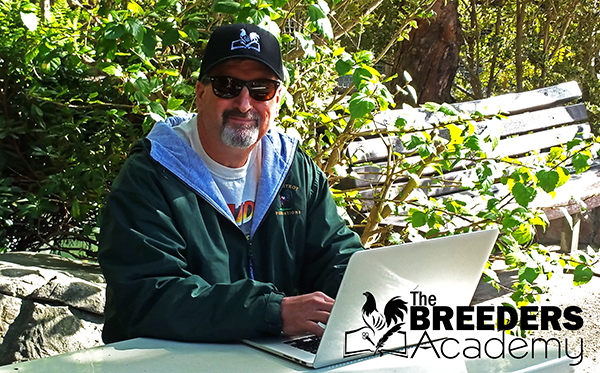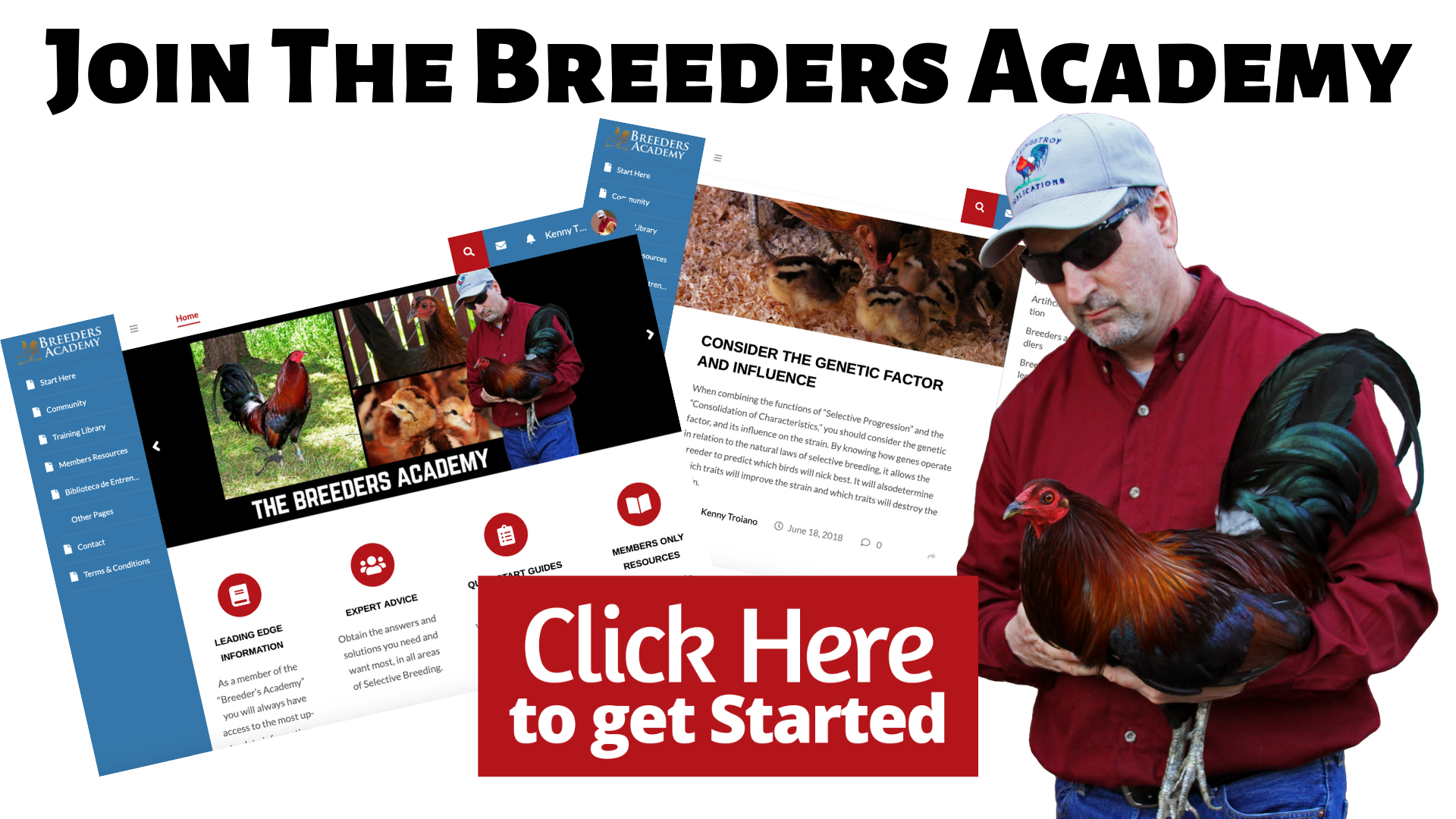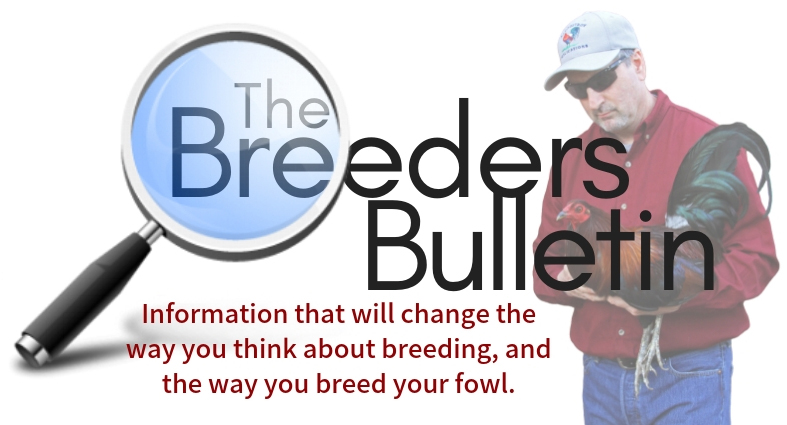By Kenny Troiano
Copyright © 2020 – by Kenny Troiano/Maximus Troy Publications
 The random combination of genes allows the breeder the opportunity to produce some of the greatest individuals. Some would say, not as often as we would like, but enough to continue to improve the family, and the breed.
The random combination of genes allows the breeder the opportunity to produce some of the greatest individuals. Some would say, not as often as we would like, but enough to continue to improve the family, and the breed.
I’m talking about the very rare individual that constitutes maybe five percent of all the fowl bred today. The fowl I am talking about are birds that have exceptional attributes, physically and mentally, that can pass those exceptional traits to their offspring. These fowl not only look and act good, but have an unusual ability to be propotent.
Prepotency is what makes these fowl so great. It’s what gives them the superiority and power over other brood fowl. It is through their power of prepotency that they are able to influence and transmit beneficial characteristics to their offspring in such a way that it improves the family or strain. The objective for every breeder is to find that special individual that has outstanding characteristics and is prepotent.
How to find great individuals? In my experience, outstanding brood fowl can arise and are found unexpectedly, and in the most unlikely places. These great individuals can come from breeding old bloodlines, or they can come from more modern-day bloodlines. They can come from a beginner as well as an experienced breeder. They can come from fowl that are crossed, or they can come from a highly inbred strain, or a combination of the two. They can come from the best-known farms in the country, the simple backyard breeder, or a small farm in some remote area. Surprising enough, they can even come from those tricky peddlers.
Identifying these great individuals requires objectivity and thorough testing. It may require that you test a large number of birds before finding the right one. If they have the attributes you are looking for, test their ability to transmit their characters to their offspring.
Once you find the cock and hen that are exceptional, hold onto them, for they are quite rare. It may take a lot of effort and patience on your part to find them, but when you do, breed them, and breed them a lot.
The best option: If you can obtain fowl from a reputable and honest breeder, who is known for his high-quality fowl, and for his ability to run a good breeding operation, one that is methodical, you will most likely not experience any serious surprises. These are breeders who know the history of their fowl. They also know the breeding tendencies and weaknesses of the birds on their farms. These breeders also know how to breed them in order to get the best results. They are the Master Breeders within our ranks who are meticulous in maintain a very high level of quality at all times.
If this is unlikely, the best plan of action is to attain the best brood fowl possible, and through proper selection and hard culling you can dramatically improve the quality and performance of your fowl. Every year, identify the very best individuals on your yard and breed to those. Stay away from the average or poor individual, and avoid breeding to anything that is considered second-rate or defective. This is called “Breeding towards Mediocrity,” and is very dangerous to the future of your strain.
Things to Lookout For
When purchasing mature brood fowl, you should always select the birds in person. It is risky to purchase fowl over the phone or on the internet, for you never know what’s going to come out of that box. By selecting fowl in person, you are able to pick fowl that best represent your ideal cock and hen. When selecting, I suggest that you look for faults and imperfections that are beyond the obvious flaws, such as poor structure and color irregularities. Here is a list of important attributes to select for, and defects to avoid:
- The first attribute to look for is good health and vigor. Without good health, nothing else matters. If you see any birds that are sick or unhealthy-looking move on.
- Eyes that are bright and have the proper shaped pupil, and are not sunken-in. Remember that they should not only be the right color, but both eyes should be the same shade of color as well.
- A head that is bright and red, not pale, purple or blue, with the proper shaped beak. The beak could be twisted or gaped, otherwise known as “open beak,” where the upper and lower portions of the beak do not meet, thereby making it hard for the bird to eat and drink.
- Another defect to watch out for, especially for gamefowl breeds, is beetle brow. This is a bone mass above the eyes.
- Look for feathers that are smooth and shiny. Feather condition is a good indication of their overall health. Healthy birds have smooth, glossy looking plumage. Unhealthy birds have dull, course, and raggedy looking plumages.
- Look for defects and deformities, such as, legs that are bowed or knocked kneed, or irregular toes that are curled or duck-toed.
- Another defect is feathers in the shanks in clean legged breeds. This is normally seen in breeds such as Cochins. However, for breeds such as Welsummers and American Games this is a serious fault. Although uncommon, when judging shows, I have seen feathers in the shanks and feet. These feathers are so small and are hard to see. Often they appear as small quills one-sixteenth to one-eighth of an inch long. This is a disqualification for all clean legged breeds, and should be discouraged at all times.
- For problems in the tail, look for “split-tail.” This is a tail that shows a distinct gap between the main tail This gap usually extends all the way down to the base of the feathers. Also “wry-tail,” where the tail is carried permanently to one side, as well as squirrel-tailed, where the tail is carried well over the cocks back, past the ninety-degree angle. These are very common defects, and should be eliminated at every opportunity.
- Also, look for “split-wing,” where the wing shows a distinct gap between the primaries and the secondaries.
- Good temperament is a must, no matter the breed. Hens should not be flighty or mean. And cocks should be full of pride, but not be man fighters or man haters.
- And, yes, they should have the proper type, conformation of body and color of plumage.
Special Note: For more on “conformation of body” and “color of plumage,” check out the programs and courses on the “Breeders Academy,” concerning these subjects.
I hope you enjoyed this week’s article and the information I provide helps you in the eventual improvement and advancement of your fowl.
It has always been my objective to inspire more breeders, and to provide breeders the tools they need to create the fowl of their dreams, and achieve their goals. It’s a long journey, but a worthwhile one.
Sincerely,
Kenny Troiano

